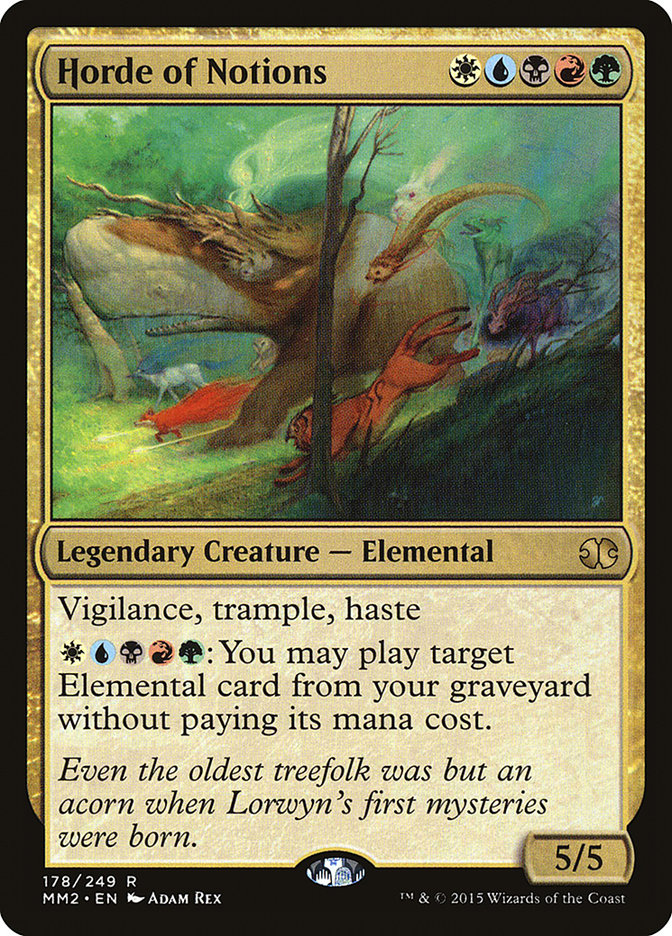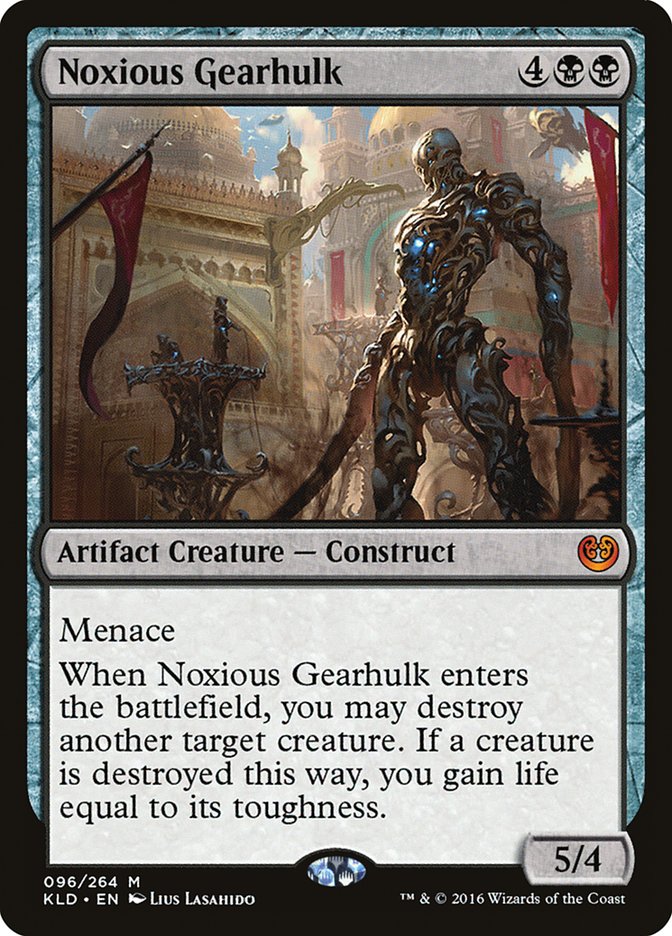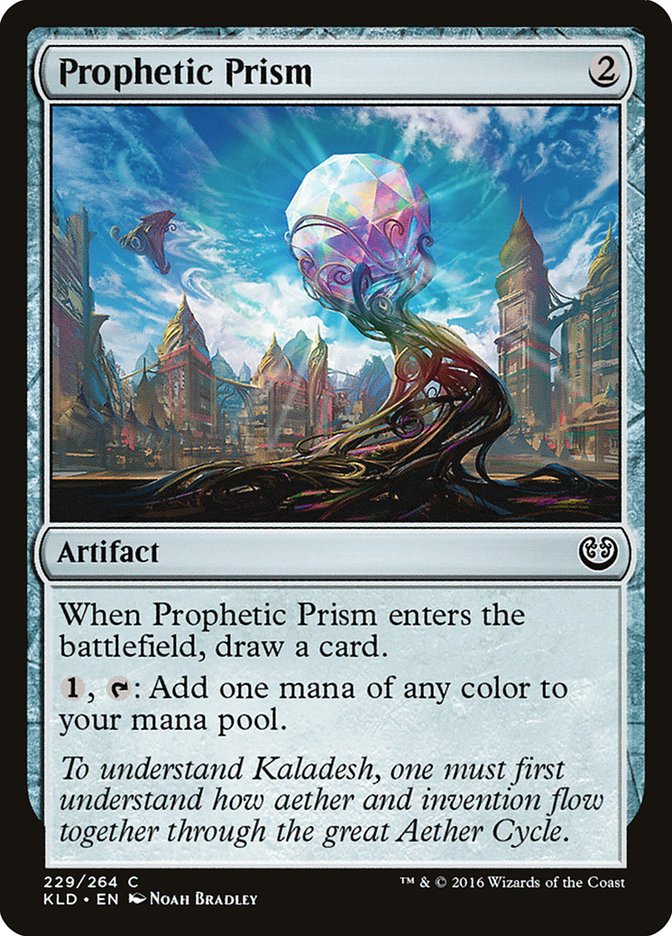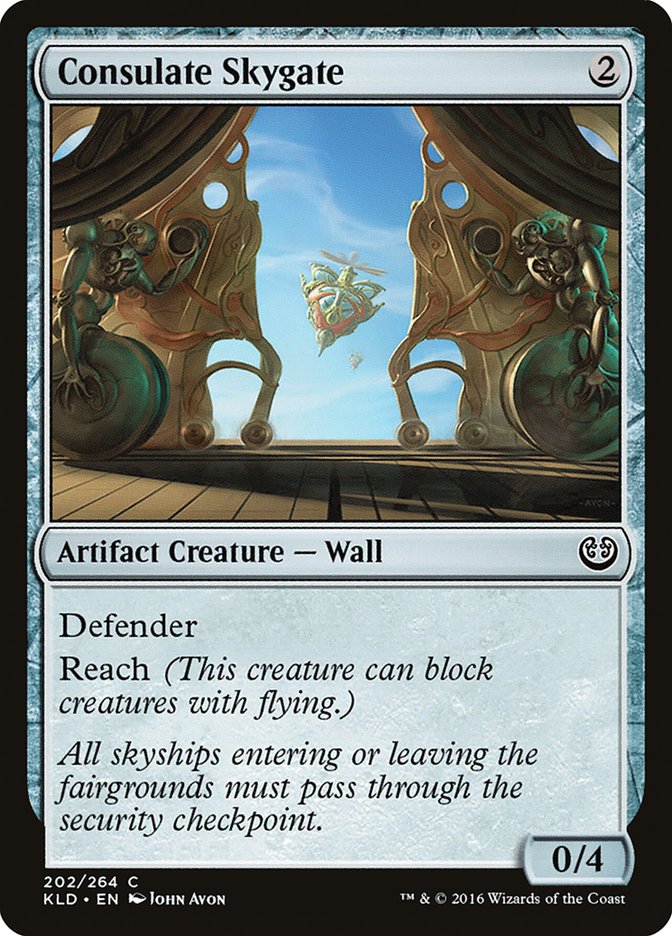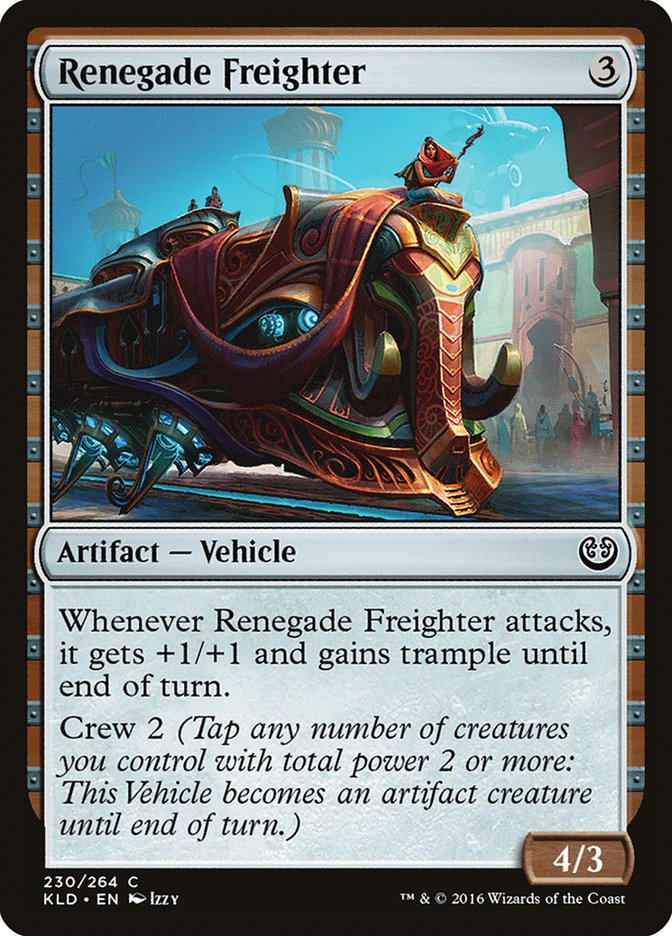Restrictions breed creativity.
Mark Rosewater, the head designer for Magic: The Gathering, says this phrase frequently, so it probably deserves our attention. Let’s delve into this expression.
The fact that restriction assists creativity is unintuitive. Creativity is a skill. You would think that restriction, well, restricts the applications of creativity. But that’s not really how the brain works. Mark Rosewater, in a recent Drive to Work podcast, provides an anecdote to illustrate this. Apparently, it is common practice in a basic art class to begin by drawing a squiggle on the canvas.
Having something to work off is important, even if it seems inconsequential. It is difficult to create something from nothing. So that little squiggle goes a long way towards the creative mind. A starting point is a restriction and this restriction jumpstarts creativity.
As we create something, moving forward in an attempt to uncover a solution or goal, the restrictions build on top of each other. This compounding of restrictions is a common tool for creative problem solving and discovery, often called “reducing the space.” As we continue to build upon our previous approaches, the space of solutions gets smaller and smaller, and eventually converges.
The most creative aspect of Magic is the process of creating a deck: brewing or drafting. As slots in your deck begin to fill, the space regarding what you need lessens.
Restriction in Constructed
The most common way restriction is used to brew is to decide something about your deck. Start with four copies of your favorite card, decide you want to make U/G Control…something that limits your card pool. Today I will start with a restriction quite specific to the current Standard format.
I am sure it has been ingrained in your mind by now that B/G Delirium and W/U Flash are the rulers of the current standard format. Play one of these two decks, or brew something that beats both. This is our initial restriction, our objective that sparks creativity. Beat Delirium and Flash.
Creatures (15)
- 2 Pilgrim's Eye
- 3 Mindwrack Demon
- 1 Tireless Tracker
- 1 Emrakul, the Promised End
- 3 Ishkanah, Grafwidow
- 4 Grim Flayer
- 1 Noxious Gearhulk
Planeswalkers (4)
Lands (23)
Spells (18)

Delirium is a deck that goes over the top. To do this successfully, the deck has efficient early plays that scale well into the late-game, such as Grim Flayer and Grasp of Darkness. And once Ishkanah, Grafwidow or Emrakul, the Promised End resolves, it’s hard for the majority of decks to win.
This level of power and flexibility of B/G Delirium is extremely hard to match. We can’t do better on both ends, but we can do better on one. Which of the two will be decided by the composition of W/U Flash.
Creatures (20)
Planeswalkers (4)
Lands (25)
Spells (11)

The fact that this deck can play any role well — aggro, control, or midrange — is quite impressive. Thraben Inspector into Smuggler’s Copter into either Reflector Mage or Spell Queller is difficult to beat. But the value of those cards isn’t in their aggression, and they scale well into the late-game. This makes Flash very resilient.
So our goal is to beat two extremely resilient, flexible, and powerful decks? That’s not too easy, and probably why so many people suggest that this format has been solved. But I don’t give up so easy, and neither should you. This just means we have to be more innovative!
Let’s take a look at a deck that has recently come out of the dark and is putting up good results.
Creatures (11)
Planeswalkers (3)
Lands (22)
Spells (24)

G/R Aetherworks goes over the top of B/G Delirium! Throw in a giant Spider and then you get to laugh at W/U Flash! Although this isn’t exactly true, the thought process has merit. Ishkanah, Grafwidow shuts down W/U Flash. Their creatures can’t get through it, and then over time you go over the top of what they are trying to do. The problem is, Aetherworks Marvel does not line up particularly well against Spell Queller. Servant of the Conduit can help when on the play, but overall, it’s not enough to sway the matchup in the favor of G/R Aetherworks by a significant margin.
So what have we learned? We should probably be playing Ishkanah, Grafwidow and Emrakul, The Promised End if we want to be able to beat both decks. Others have come to this conclusion, and that’s why so many people regard B/G Delirium as the best deck in the format. But we want to do something different. Think back to the summer. Do you recall a deck that played Emrakul as quickly as possible that also stalled with Ishkanah?
Let’s look at how Temur Emerge can evolve for this format with Delirium and Flash in mind.
Creatures (20)
- 3 Pilgrim's Eye
- 1 Tireless Tracker
- 2 Emrakul, the Promised End
- 2 Wretched Gryff
- 3 Elder Deep-Fiend
- 3 Ishkanah, Grafwidow
- 2 Filigree Familiar
- 4 Servant of the Conduit
Planeswalkers (1)
Lands (22)
Spells (17)

Although this deck has lost the velocity of Gather the Pack, gaining acceleration in Servant of the Conduit is very nice. We can finally say goodbye to Primal Druid. In fact, other than those exchanges, the deck didn’t gain or lose much in general.
This brew is not necessarily innovative, as the deck already existed, but we were able to re-discover it through the restrictions that Standard currently provides.
Restriction in Drafting
Restriction in drafting is more of a process. You can’t decide where to go in the same way that you can in Constructed. You can’t choose how to restrict yourself; instead, you have to choose how the cards restrict you.
It is important to understand that every pick of a draft is more than just one card for your deck. Each card you draft influences the next one you take. This cascades into a deck and it does so through the restrictions you interpret from your pool of cards. You feel like you don’t have enough removal. This then becomes a priority. And this feeling comes from the relationships between the cards you currently have, the cards in the pack that you’re looking at, and the desired deck at the end of it.
You sculpt your pool as you draft, which means that you are in control of the restrictions that drive the draft. There are plenty of common restrictions you can glean from the cards you have. In fact, you do this all the time. But let’s quantify it so as to move away from a feeling and towards an understanding.
Colors and Power
The density of blue cards you have places a restriction on the non-blue cards you take. If five out of the six cards you currently have are blue, you are almost guaranteed to include a blue card in your final deck. This increases the value of blue cards.
Fast forward to Pack 3. By the end of almost every draft, you are in a specific two-color combination. For example, let’s say that your deck-in-the-making has nine blue cards and nine white cards. When you open a Noxious Gearhulk in Pack 3, you pass it because you can’t cast it.
There is a point of no return for changing colors, and identifying it is important. When are you really locked in? This is a restriction your pool provides. There isn’t a clear-cut answer as to how many cards of a color it takes. It is a function on quantity and power level. That’s why the Gearhulk is such an interesting example. It’s so powerful that, in Pack 2, it might just be worth switching over for.
What follows is an attempt to mathematically explain this function:
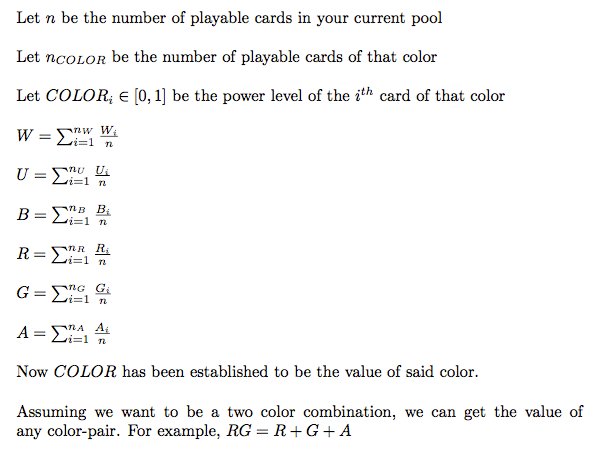
Now, with the information gleaned from the pool, we can compare the value of each color combination. If we approach drafting as an attempt to maximize a single color combination, then this method will attempt to find that. At every pick, recalculate the scores using the technique above, and take the card that yields the highest score.
There are plenty of other ways to use this information, but that is the most straightforward. This metric reinforces taking the best cards first, sticking to a specific color combination, and only changing your secondary color for a relatively late-pick powerful card. That’s not a bad direction, given how simple this is mathematically. We were able to create this simply by looking at how the cards we have restrict the cards we take!
Of course, this method is imperfect. Evaluations don’t change. Initially I provided the example of removal becoming more important later in the draft if your deck is lacking it. That is not accounted for here. The way a card fits into a specific deck, whether through necessity or synergy, is not considered. Funny enough, those happen to be the two other ways that cards restrict your draft.
Necessity
How many times have you gone into Pack 3 of a Kaladesh draft and said to yourself, “If I get a Prophetic Prism, this deck is great!”? I know I have quite a bit. After this happened for maybe the fifth time, I just started taking Prophetic Prism highly. And, you know what, my draft decks got much better. I was able to identify that, for many decks in this format, Prophetic Prism is a necessity.
You’ve heard it over and over. You need removal. You need two-drops. You need win conditions. These are the necessities of Limited. If you are lacking any of them by the end of a draft, that’s going to be a problem. Over time, the value of these types of cards change drastically. If you have no two-mana creatures going into Pack 3, then you don’t need to take that bomb rare. Just take the Aviary Mechanic and move on.
As long as you keep in mind what necessities you are missing, try to fill the hole starting as early as possible. This restriction exists to keep us in check, and if you don’t abide, it can punish you. The value of the cards go up so high in Pack 3 that your deck misses out on the biggest payoff.
Synergy
Every Limited deck has some type of synergy. Consider Renegade Freighter. This card is very good and has a generally high value regarding the algorithm above. But it’s not actually good in a deck with a couple of copies of Aether Theorist and Consulate Skygate. Renegade Freighter, and Vehicles in general, require other cards to reach their full potential.
So how should we prioritize synergy in a draft? Renegade Freighter doesn’t make me lean towards a color but toward aggression. It should come as no surprise that this implies the values assigned to each card change during the draft and that the values change in each archetype because of synergies.
The flux is so much that we can no longer quantify our approach perfectly, but we can still move forward with it in mind. Here is another example:
Aetherworks Marvel is quite an interesting card in Limited. Six energy is a lot, and four mana do-nothing cards are quite risky in a format with Renegade Freighter. But the potential for card advantage and power is there.
Shota Yasooka drafted a deck with two copies of Aetherworks Marvel at Pro Tour Kaladesh! When he drafted the first copy, it was out of a weak pack, but we see an immediate shift towards energy. He immediately follows this pick with a Thriving Turtle, and then a couple of picks later he takes a Hightide Hermit over a Malfunction. This demonstrates a slant towards energy, as the Hermit is not a very good card but synergizes with the overall deck.
It is important to understand how and why any specific card has to be evaluated differently for your current deck as opposed to the norm. That is why one of the most successful ways to draft synergistic decks is to put on blinders and skim the pack for cards that specifically do one thing, which, for Shota, was produce or consume energy. You restrict yourself in order to linearize your deck. If it does one thing better than everybody else, maybe that is just good enough. This is usually how you end up with a Limited deck that feels like it is on a Constructed power level, which is a product of restriction and synergy.
Overall, restrictions are everywhere in this game. But they don’t have to be a bad thing. Through a complete understanding of the way these restrictions are applied, they can be used to your advantage. So next time you’re brewing a deck for Friday Night Magic or drafting in your local store, keep this technique in mind. It’s subtle, but useful nonetheless.


